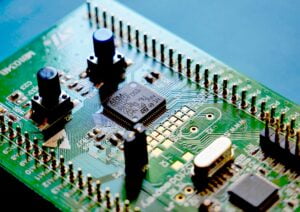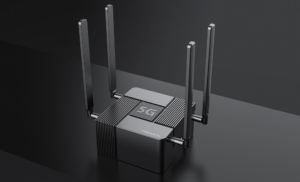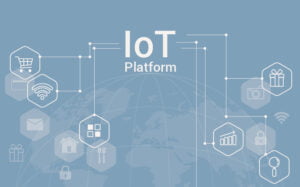The Internet of Things (IoT) is transforming how we live and work, with sensors at its core. IoT sensors convert physical or chemical quantities—such as temperature, humidity, light, and vibration—into digital signals that IoT systems can analyze, providing crucial data for smart applications. This guide offers an in-depth look at sensor types, selection strategies, and how to integrate them with systems effectively. It is designed to help customers understand the range of IoT sensors available and determine which types, gateways, and communication methods best suit their applications.
1. Overview of IoT Sensors
1.1 What Are IoT Sensors and Why Are They Important?
IoT sensors are devices that detect specific physical or chemical quantities and convert them into electrical signals for IoT systems. They provide the foundation for data acquisition, enabling IoT applications to gather real-time information from their surroundings and send it to cloud or local servers for analysis, thus supporting intelligent decision-making.
Today, IoT sensors have been adopted across a range of industries—from industrial automation and smart homes to smart cities and precision agriculture. They monitor and control environments, contributing to the automation and intelligence of systems.
2. Classification of IoT Sensors
IoT sensors can be categorized in various ways, with each classification reflecting distinct characteristics and applicable scenarios. Here are the primary classifications:
2.1 Classification by Measurement Type
IoT sensors can be divided into several categories based on the type of physical or chemical quantity they measure:
- Temperature and Humidity Sensors: Measure environmental temperature and humidity, ideal for agriculture, warehousing, and cold chain logistics where environmental monitoring is essential.
- Pressure Sensors: Monitor changes in pressure, such as air or liquid pressure, and are widely used in industrial pipelines, fluid control, and automated production.
- Light Sensors: Detect changes in light intensity and are used in smart lighting, agriculture, and environmental monitoring.
- Acceleration and Vibration Sensors: Detect an object’s acceleration and vibration, often applied in machinery status monitoring and vehicle detection.
- Gas Sensors: Detect the concentration of specific gases (such as carbon monoxide, methane) in the air, used in industrial emissions monitoring, environmental monitoring, and home safety.
2.2 Classification by Working Principle
Based on the operating principles, sensors can be classified as follows:
- Resistive Sensors: Measure changes in an object’s resistance to sense environmental changes, such as humidity sensors.
- Capacitive Sensors: Use variations in capacitance to detect physical quantities, such as touch sensors and proximity sensors.
- Piezoelectric Sensors: Operate based on the piezoelectric effect, where pressure generates electric charges, as in acceleration sensors.
- Photoelectric Sensors: Use changes in the current or voltage of photosensitive materials to detect light intensity, such as photodiodes and photoconductors.
- Magnetic Sensors: Utilize magnetic field changes to induce electric current changes, as seen in Hall effect sensors.
2.3 Classification by Signal Output
Sensors can also be categorized by their signal output type:
- Analog Sensors: Output continuous analog signals that require analog-to-digital conversion (ADC) for digital systems. They are often used in scenarios requiring high-precision data measurements.
- Digital Sensors: Output discrete digital signals, compatible with digital systems and commonly using interfaces like I2C or SPI.
2.4 Classification by Application Field
IoT sensors are further classified based on their application fields, such as:
- Industrial Sensors: Primarily used in industrial control and automation to detect parameters like pressure, temperature, and vibration, ensuring stable equipment operation.
- Agricultural Sensors: Monitor soil moisture, weather conditions, light levels, and more to support precision agriculture with essential environmental data.
- Smart Home Sensors: Include motion detectors, door/window switches, and smoke detectors for home safety and comfort management.
- Healthcare Sensors: Detect physiological parameters (e.g., heart rate, blood oxygen level, blood pressure) for health monitoring and early warnings of potential issues.
3. Communication Methods for IoT Sensors
In IoT systems, sensors use a variety of communication methods to transmit data to gateways or servers. Different communication methods cater to various needs, such as transmission range, bandwidth, power consumption, and data rate. Here’s a closer look at the main communication methods in IoT.
3.1 Wireless Communication Methods
3.1.1 Wi-Fi
Wi-Fi is a widely used short-range wireless communication technology known for its high transmission rates and stable networking, making it ideal for scenarios requiring high data throughput.
- Advantages: High transmission rate (up to hundreds of Mbps), capable of supporting real-time video transmission.
- Disadvantages: Higher power consumption, suitable for applications with external power sources, not for low-power battery-operated devices.
- Typical Applications: Smart home applications, such as high-definition surveillance cameras and smart locks.
3.1.2 Bluetooth
Bluetooth is a short-range, low-power communication protocol suitable for connecting devices within close proximity indoors.
- Advantages: Low power consumption, low cost, moderate data rate, and easy pairing with mobile devices.
- Disadvantages: Limited transmission range (usually up to 10 meters).
- Typical Applications: Wearable devices (such as smartwatches and fitness bands) and smart home devices (like smart light bulbs).
3.1.3 Zigbee
Zigbee is a low-power, short-range wireless communication technology suitable for transmitting small amounts of data and supporting long battery life.
- Advantages: Low power consumption, supports self-networking, and is ideal for large-scale distributed networks.
- Disadvantages: Low transmission rate (up to 250 kbps), not suitable for large data transmissions.
- Typical Applications: Smart home sensor networks, including temperature and humidity sensors, and motion sensors.
3.1.4 LoRa
LoRa (Long Range) is a long-range, low-power wireless communication technology based on spread spectrum, suitable for applications that require long-distance transmission with low bandwidth needs.
- Advantages: Long transmission range (up to 10 kilometers), low power consumption, suitable for battery-powered sensors.
- Disadvantages: Low data rate (up to 50 kbps), not suitable for high-bandwidth applications.
- Typical Applications: Agricultural monitoring, smart metering, and widely distributed outdoor applications.
3.1.5 NB-IoT
NB-IoT (Narrowband IoT) is a narrowband cellular IoT technology designed for low-power, wide-area applications.
- Advantages: Wide coverage, strong penetration, supports massive device connections.
- Disadvantages: Relies on carrier networks, requires a subscription service.
- Typical Applications: Smart city applications, such as smart parking, and environmental monitoring.
3.2 Wired Communication Methods
3.2.1 RS-485
RS-485 is a differential communication protocol known for its strong anti-interference capabilities and long transmission distances.
- Advantages: Strong anti-interference capability, long transmission distance (up to 1200 meters).
- Disadvantages: Requires wiring, not suitable for dynamic deployments.
- Typical Applications: Industrial automation equipment, environmental monitoring in stable wired networks.
3.2.2 Ethernet
Ethernet is the most common wired network communication method, known for its high bandwidth and strong stability.
- Advantages: High bandwidth (up to gigabit speeds), strong stability, suitable for high-bandwidth devices.
- Disadvantages: Requires wiring, higher cost, not ideal for wide deployments.
- Typical Applications: Industrial control, building automation, and monitoring systems for fixed installations.
3.2.3 CAN Bus
CAN (Controller Area Network) is a reliable bus protocol often used in automotive and industrial automation applications.
- Advantages: High reliability, strong anti-interference, suitable for real-time data transmission.
- Disadvantages: Lower data rate (typically up to 1 Mbps), not ideal for long-distance communication.
- Typical Applications: Automotive electronic systems and industrial control equipment.
4. Selecting the Right IoT Sensor
4.1 Choose Based on Measurement Needs
Identify the physical quantity the sensor needs to detect (e.g., temperature, humidity, pressure), and select the appropriate level of measurement accuracy and sensitivity for the application.
4.2 Choose Based on Communication Method
Choose a suitable communication method based on usage scenarios and network coverage. For example, Wi-Fi or Bluetooth is suitable for indoor short-range communication, while LoRa or NB-IoT is ideal for wide-range outdoor monitoring.
4.3 Choose Based on Power Consumption Needs
For battery-operated devices, prioritize low-power communication methods like Zigbee, LoRa, or NB-IoT. For devices with external power sources, Wi-Fi or Ethernet can be chosen for higher data rates.
5. Gateways and System Integration
5.1 Role of the Gateway
An IoT gateway aggregates data from sensors and converts protocols to ensure compatibility with the IoT platform. Common gateway functions include protocol conversion (e.g., Zigbee to Wi-Fi), data caching, and edge computing.
5.2 Select Gateway Based on Sensor Type
Select the gateway type that is compatible with the sensor’s communication method. For example, Zigbee sensors require a Zigbee gateway, while LoRa sensors require a LoRa gateway.
5.3 System Integration and Platform Compatibility
Data can be uploaded to cloud platforms (such as AWS IoT or Azure IoT Hub) for remote management and data analysis, or integrated into local servers to meet low-latency requirements.
6. Case Studies: Choosing Sensors and Gateways for Different Applications
- Smart Homes: Wi-Fi or Zigbee communication is typically used for temperature, light, and motion sensors, with smart home hubs or gateways connecting to control platforms.
- Industrial IoT: Recommended for RS-485 or LoRa communication sensors, with LoRa or industrial Ethernet gateways connecting to monitoring systems.
- Smart Agriculture: LoRa sensors and gateways are ideal for wide-area monitoring and data transmission to agriculture management platforms.
Choosing the right IoT sensor involves evaluating measurement needs, communication methods, and power requirements. A well-matched gateway and system integration approach enhance data transmission reliability and ease device management. As 5G and edge computing advance, the applications and potential of IoT sensors and gateways will continue to expand.


